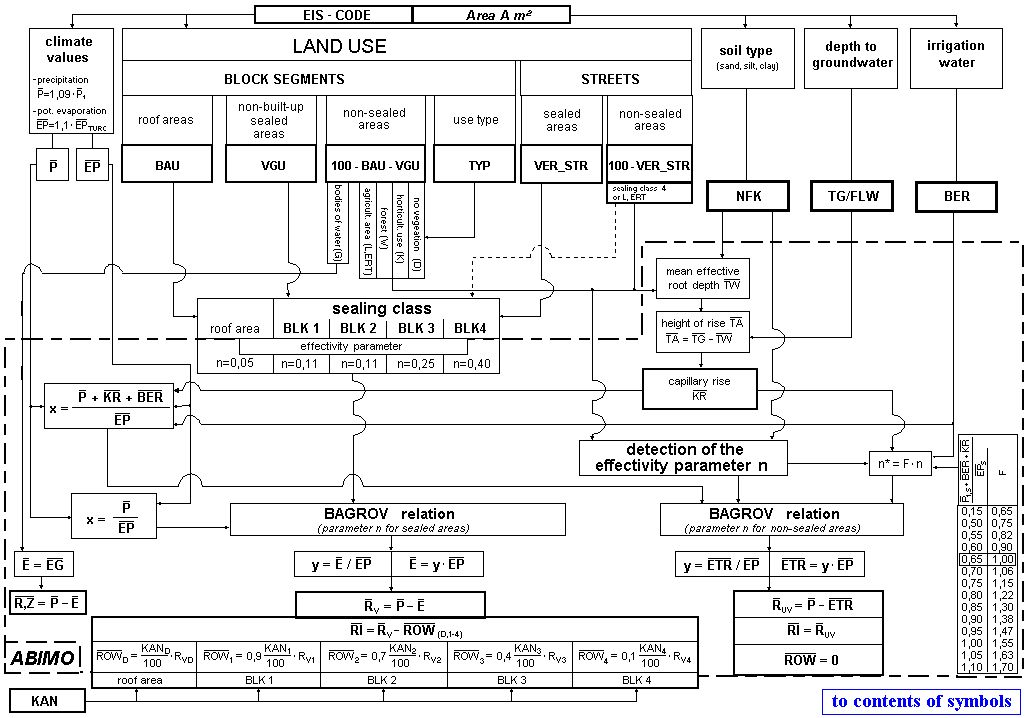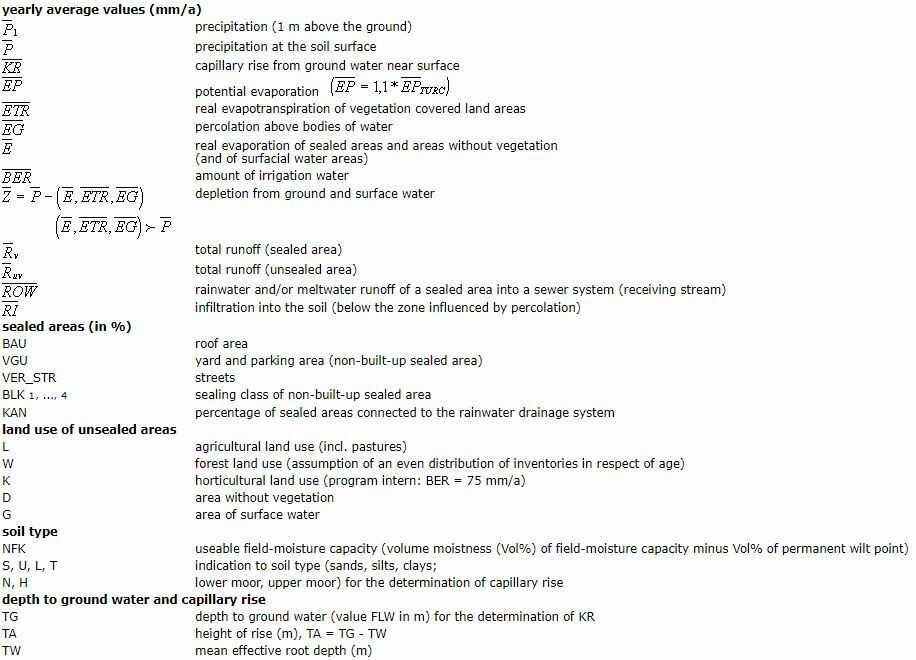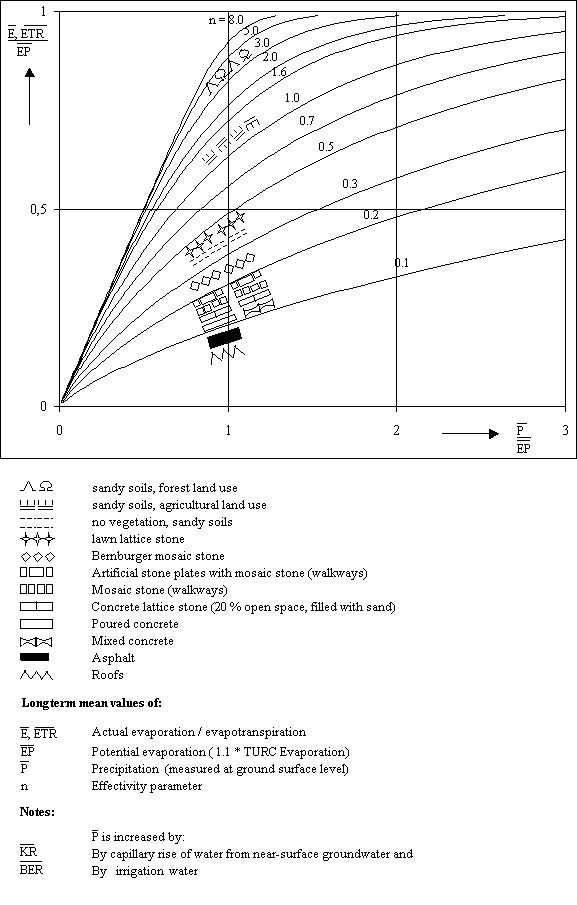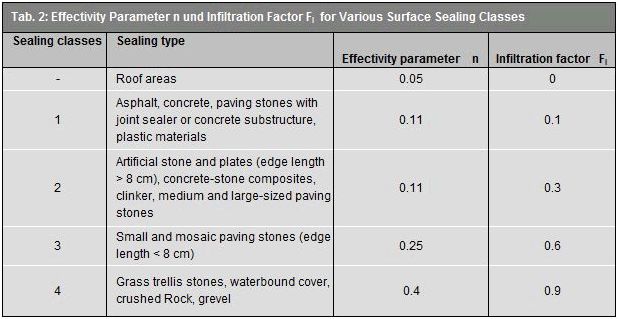With increasing precipitation P, real evaporation ER approaches potential evaporation EP, e.g. the quotient ER/EP approaches a value of 1. With decreasing precipitation P, (P/EP approaches a value of 0), real evaporation ER approaches precipitation P. The intensity with which these frame conditions are achieved, is modified by the storage properties of the evaporative zone (effectivity parameter n).
Storage properties of a location are particularly influenced by the type of land use (increasing storage effectivity in the order of: sealed surfaces, soils without vegetation, agricultural, horticultural, and forest use) as well as soil type (increased storage effectivity with greater binding capacity of the soil).
A measure for the storage effectivity of unsealed surfaces is usable field-moisture capacity. It is defined as the difference between the moisture values of the soil for field capacity (water begins to infiltrate the soil) and for the wilting point (permanent damage to plants). Other land use factors modify the parameter value n. These factors include yield per hectare, and tree type and age. The parameter n is quantified by the evaluation of observations of numerous domestic and foreign lysimeter stations, and from water management studies in river catchment areas.
Locations and regions with near-surface groundwater have increased evaporation in comparison with conditions uninfluenced by groundwater. This is due to the capillary rise of groundwater into the evaporative soil zone, influenced by groundwater depth and soil properties. The formation of surface runoff flow is reduced. If real evaporation exceeds precipitation, there is water depletion. Values for surface runoff become negative, such as in river and lake lowlands.
Bodies of water show increased potential evaporation, in comparison to land areas. This is due to greater heat (lower reflective capacity for incoming radiation). Actual evaporation from bodies of water was equated with this increased potential evaporation, as an approach.
Percolation at specific points, such as at groundwater recharge plants of the water works, was not considered. Horticultural land uses (allotment gardens) were given a set value and added to precipitation, in order to give an approximate value for plant watering.
Mean total surface flow was calculated as the difference between precipitation and real evaporation. A second step then determined surface runoff. Surface runoff corresponds to total runoff for roof areas that discharge into the sewage system. Areas not connected to the sewage system do not produce overland flow. Non-built-up sealed surfaces infiltrate some of the discharge flow into the ground, depending on the type of covering material (surface sealing type). This infiltration factor depends on the type, size, and age of the joints. Depending on the degree of connection to the sewage system, surface flow which does not infiltrate is discharged as surface runoff by way of the sewage system, or infiltrates at the edge of the sealed surfaces. This is also true for roof areas not connected to the sewage system (cf. Tab. 1). The difference between total runoff and surface runoff thus corresponds to percolation as a parameter for groundwater
recharge.
The application of this procedure for urban regions requires the determination of the parameters n and the infiltration factors of various sealing materials. Evaluations were made of lysimeter studies on various sealing materials, and of calculations for loss from wetting (cf. Wessolek/Facklam 1997). Selected dimensions for these parameters are listed in Tab. 2. Changes in these parameters related to the aging process, the thickening and the muddying of the joints were also considered. Insufficient basic scientific data cause the statements to contain some uncertainties. Beyond that, a different classification of sealing types into sealing classes would be desireable for hydrological questions.




